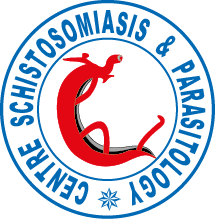Epidemiology of schistosomiasis and soil-transmitted helminthiasis in the sub-division of Kékem (West-Cameroon)
Abstract
Urinary schistosomiasis and geohelminths are endemic in Cameroon and continues to pose public health challenges especially in inhabitants of rural areas. This study was conducted in an attempt to re-assess the epidemiological data (prevalence and intensity of infection) of the prevalence of urinary schistosomiasis and geohelminths among school children in Kekem, local government areas,West- Cameroon. The study was carry out in 4 schools and, in each of the selected schools, stool and urine samples were collected from 180 school children. Single Kato-Katz technique was employed to determine presence of geohelminth; urine filtration technique was employed to determine presence of Schistosoma haematobium eggs in urine. An overall prevalence of 1.7% for urinary schistosomiasis was observed among the 180 children examined. No significant difference in prevalence was observed between school, sex and across age group examined (p>0.05). The prevalence rates of urinary schistosomiasis in each school were 6.5% in Kekem 44; 2% in Mbafamand 0% in Mboebo and Plateau B. This shows that there is a significant decrease, due to previous treatments which took place in this area. This provided the positive intervention of the schistosomiasis control. An overall prevalence rates of Soil Transmitted Helminths were 17.8% for Ascaris lumbricoïdes, 17.2% for Trichuristrichiuraand1.7% for Necator americanus. For each parasite, no significant difference in prevalence was observed between school, sex and across age group.
KEYWORDS: Epidemiology, Schistosoma haematobium, soil-transmitted helminthes, Kekem, Cameroon.
